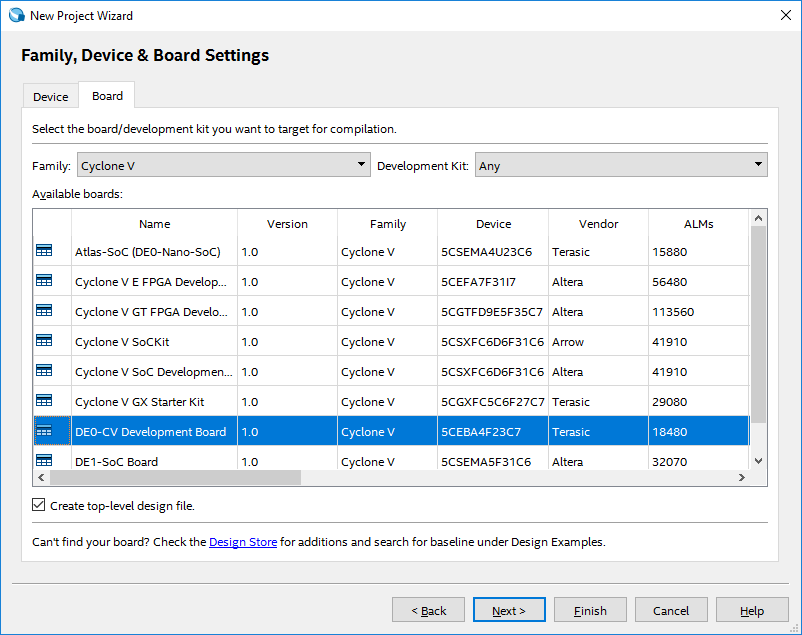
License File For Quartus 2 Tutorial
This tutorial shows you how to create the hardware equivalent of “Hello World”: a blinking LED. This is a simple exercise to get you started using the Intel® Quartus® Prime Software Lite edition software for FPGA development. You’ll learn to compile Verilog code, make pin assignments, create timing constraints, and then program the FPGA to blink one of the four user LEDs on the board.
You'll use a 50 MHz clock input (from the on-board oscillator) to drive a counter, and assign an LED to one of the counter output bits. Level: Beginner Materials Hardware Cyclone 10 LP kit The Cyclone 10 LP Evaluation Kit is an easy-to-use platform to start development with Intel's low power Intel® Cyclone® 10 LP FPGA, and the Nios® II configurable 32-bit processor. Pismo drugu kak ya provel kanikuli na anglijskom 2. You can buy the kit here. Software Intel® Quartus® Prime Software Suite Lite Edition The FPGA design software used here is ideal for beginners as it’s free to download and no license file is required. You can download the software.
Crack stoked big air pc. As you beat challenges, win competitions, and develop your unique style, you’ll gain sponsorships, clothes, and gear from the world’s leading brands. Stoked: Big Air Edition is a snowboarding game that lets you pull off any trick in your own style by giving you physical control of your rider through the analog sticks.
Note: The installation files are large (several gigabytes) and can take a long time to download and install. To minimize download time and disk space required, we recommend you download only those items necessary for this exercise. When prompted which files to download, uncheck “ Select All” and select only Intel Quartus Prime and Intel Cyclone 10 LP device support only.
Once you’ve downloaded and installed the Intel® Quartus® software, you're ready to get started creating a project! Why is the Quartus download so big? The Quartus download contains several sophisticated tools to create a custom chip design, such as simulators, synthesis tools, place and route engines, timing analyzers, and device programmers, to name a few. Nearly all those functions are built into the Quartus Prime FPGA design software itself. The download also includes the embedded software design suite for the Nios II soft CPU, and one or more FPGA family databases - in our case the Cyclone 10 FPGA database. Note: Screenshots are based on the latest release v17.0 User experience may vary when using earlier or later versions of Intel® Quartus® software.
Tutorial for Quartus’ SignalTap II Logic Analyzer To create a text file of the data, right click in the white space below the waveform and select Create SignalTap II List File. The Quartus II software version 13.0sp1 supports the following device families: Arria II, Cyclone II, Cyclone III, Cyclone IV (includes all variations), Cyclone V (includes all variations), and MAX II, MAX V, MAX 3000, MAX 7000.

Step 1: Create an Intel® Quartus® Software Project Step 1.a: Open Intel® Quartus® Prime Software Suite Lite Edition. Step 1.b: Open a New Project Wizard Step 1.c: Select Next Step 1.d: Directory, Name, Top-Level Entity Choose a directory to put your project under. Here, we name our project “Blink” and place it under the intelFPGA_lite folder but you can place it wherever you want.
When prompted to create the directory, choose Yes. Where should I put my future project files? Here are a few guidelines you should adopt when choosing a directory for your project: • Don’t put projects within the Quartus tool directory. New Quartus versions come out every six months, so placing them within a specific version directory will make them “orphans” once a new version is installed. Even worse, you might lose them if you delete the older tool version. • Avoid paths with spaces in the name since some of the tools don’t like spaces in directory paths.
• Use directories where you have read/write access. This sounds intuitive, but sometimes IT departments limit administrator rights. Be sure the folder you create doesn’t require admin rights. Step 1.e: Project Type Select Empty Project, and then click Next. Step 1.f: Add Files You won’t be adding any files here.
Step 1.g: Family, Device, and Board Settings ( Note: You may need to expand window to view more device names) Select the following: Family: Cyclone 10 LP Device name: 10CL025YU256I7G Click Next. Step 1.h: EDA Tool Settings We will be using the default EDA tools and settings so there are no changes to be made.
Step 1.i: Summary Click Finish The following screen displays. Step 2: Create an HDL File Hardware Description Language (HDL) We use Verilog as the HDL. If you are familiar with the C programming language but new to programming in an HDL, Verilog is like C in that you place a semicolon ‘;’ at the end of each statement. Step 2.a: Navigate to the File tab (main window), and then select New. Select Verilog HDL File, and then click OK. Step 2.b: Choose File > Save As.